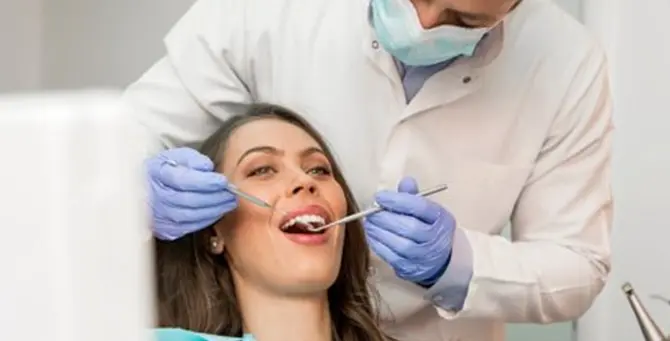In restorative dentistry, aesthetics and function must align perfectly—literally. Tooth restorations that fail to recreate natural contact points not only compromise the patient’s bite but also open the door to plaque retention, food impaction, and long-term periodontal complications. For seasoned dental professionals, achieving seamless proximal contacts is more than a technical goal; it’s a matter of clinical integrity and patient trust.
At the center of this precision lies a foundational tool: the matrix system. Whether placing a Class II composite or reconstructing anterior teeth, a properly designed matrix can mean the difference between a restoration that merely fills a space and one that replicates the natural tooth anatomy with high fidelity.
Precision Begins with Design
Dental matrix systems are not a one-size-fits-all solution. Each clinical case demands its own biomechanical considerations—tissue retraction, interproximal access, contact point height, and cervical seal integrity. For posterior restorations, sectional matrices combined with ring systems can optimize interproximal adaptation and contact tightness. Anterior restorations, on the other hand, often benefit from mylar strips or contour matrices that preserve translucency and allow for nuanced sculpting of facial and lingual surfaces.
Key features that separate high-quality matrix systems from their inferior counterparts include:
- Stable Retention: Prevents dislodgement during material placement.
- Optimal Thickness: Balances rigidity with flexibility, enabling snug contacts without over-compression.
- Smooth Surface Finish: Reduces bonding of resin to the matrix and simplifies finishing.
- Anatomic Curvature: Reflects the natural shape of tooth structures, reducing the need for post-curing contouring.
Inferior matrices—often too rigid, too flimsy, or poorly contoured—can introduce complications such as overhangs, food traps, and poor marginal adaptation. This not only increases chair time for finishing and polishing but can necessitate costly and time-consuming re-treatments.
Professional-Grade Tools for Predictable Outcomes
At WholeDent, professionalism isn’t just a tagline—it’s a principle embedded in every product selection. Their matrix systems are chosen to support restorative excellence in a broad range of clinical environments, from high-volume clinics to boutique cosmetic practices.
For example, their pre-contoured sectional matrices offer anatomical accuracy and precision, minimizing the clinician’s need to manually adjust contacts post-placement. High-grade stainless steel ensures shape retention under pressure, while clear mylar options support optimal esthetic outcomes in composite layering procedures.
WholeDent understands the real-world demands of dental practices: the pressure of tight schedules, the demand for predictable outcomes, and the necessity of reproducible techniques. That’s why their selection is not only extensive but also curated to include only the most clinically reliable and ergonomic designs.

Matrix Systems and Contact Integrity
Improper contact points remain a leading cause of restorative failure and patient dissatisfaction. A restoration that lacks proper interproximal contact can lead to:
- Gingival inflammation and bleeding
- Food impaction and caries recurrence
- Unstable occlusion over time
- Patient discomfort during mastication
Modern restorative dentistry requires not only good materials but great systems. Using high-quality dental matrices improves not just the restoration’s appearance but its long-term biological compatibility. For clinicians concerned with both patient outcomes and procedural efficiency, this is not a luxury—it’s a necessity.
Why Experienced Dentists Rely on WholeDent
WholeDent brings a clinical mindset to every aspect of its service. The company operates with the understanding that dental professionals require consistency, precision, and support. With same-day shipping, express worldwide delivery, and a transparent 60-day return policy, WholeDent ensures practitioners are never left waiting or second-guessing their purchase.
Unlike bulk resellers or generic supply companies, WholeDent provides human-centered customer support—real people with dental knowledge, available to help clinicians select products that match their clinical philosophies. This is an important distinction for practices that rely on nuanced tools like matrix systems.
Moreover, WholeDent’s extensive catalog allows clinicians to source all their restorative materials in one place—from etchants and bonding agents to wedges, rings, and finishing kits—simplifying procurement and standardizing outcomes across the operatory.
Restorative Excellence Starts at the Margins
While much emphasis is placed on composite material properties or polishing systems, success in restorative procedures often hinges on the humble matrix. When used correctly, it establishes the foundation for everything that follows—marginal seal, proximal contour, occlusal anatomy, and patient satisfaction.
For dental professionals and offices committed to providing care that balances aesthetics with functional integrity, investing in superior matrix systems is not optional. It is a clinical standard.
WholeDent’s commitment to delivering professional-grade tools, including top-tier dental matrices, ensures that each restoration placed is not just technically sound but visually indistinguishable from nature.
In a field where the smallest details yield the greatest impact, WholeDent empowers clinicians with tools that support their pursuit of perfection—one contact point at a time.
Also Read-Stay Healthy as a Gamer: How to Prioritize Your Health as a Gamer?

